Music Theory
Musical Concepts
Music has been around for so long it’s origins are lost in antiquity. Music is also an evolving contemporary of spoken language, that is refined and adapted to suit each new generation. The language of music remains the same and is accessible to anyone who wishes to learn and join the collaborative conversation of mankind. While you only need to only be able to hear music to enjoy it, for a lot of people learning to and instrument can be time consuming, costly, and confusing. In the age of the internet most people turn to online videos instructors to learn rather than seek out a teacher to guide them on their journey. The problem is that the essential foundational knowledge is either missed or passed of as something that is just not needed in order to become proficient at playing a musical instrument. It is essential to have a good understanding of the foundations of music to be able to understand the more advanced elements of music. Just like we take it for granted that words have meanings and that they are made up of a defined group of letters known as the alphabet, music is also made up basic corresponding concepts that underpin the more advanced classical and popular music of our time.
These foundations of the language of music are presented here as definitions and are generally learned in the same way as the rules of spelling and grammar are learned.
So, what is music?
Music is a system of sounds containing two elements, Pitch and Time.
Pitch is the vertical arrangement of sound using an organised system of frequencies based on an octave. This is the doubling of a frequencies. That is 440cycles per second is called A but 880cycles per second is also called A.
Time is the horizontal arrangement of these sounds into an organised repetitive division of beats.
The following is a music theory book of unknown origin.
01
Level 1
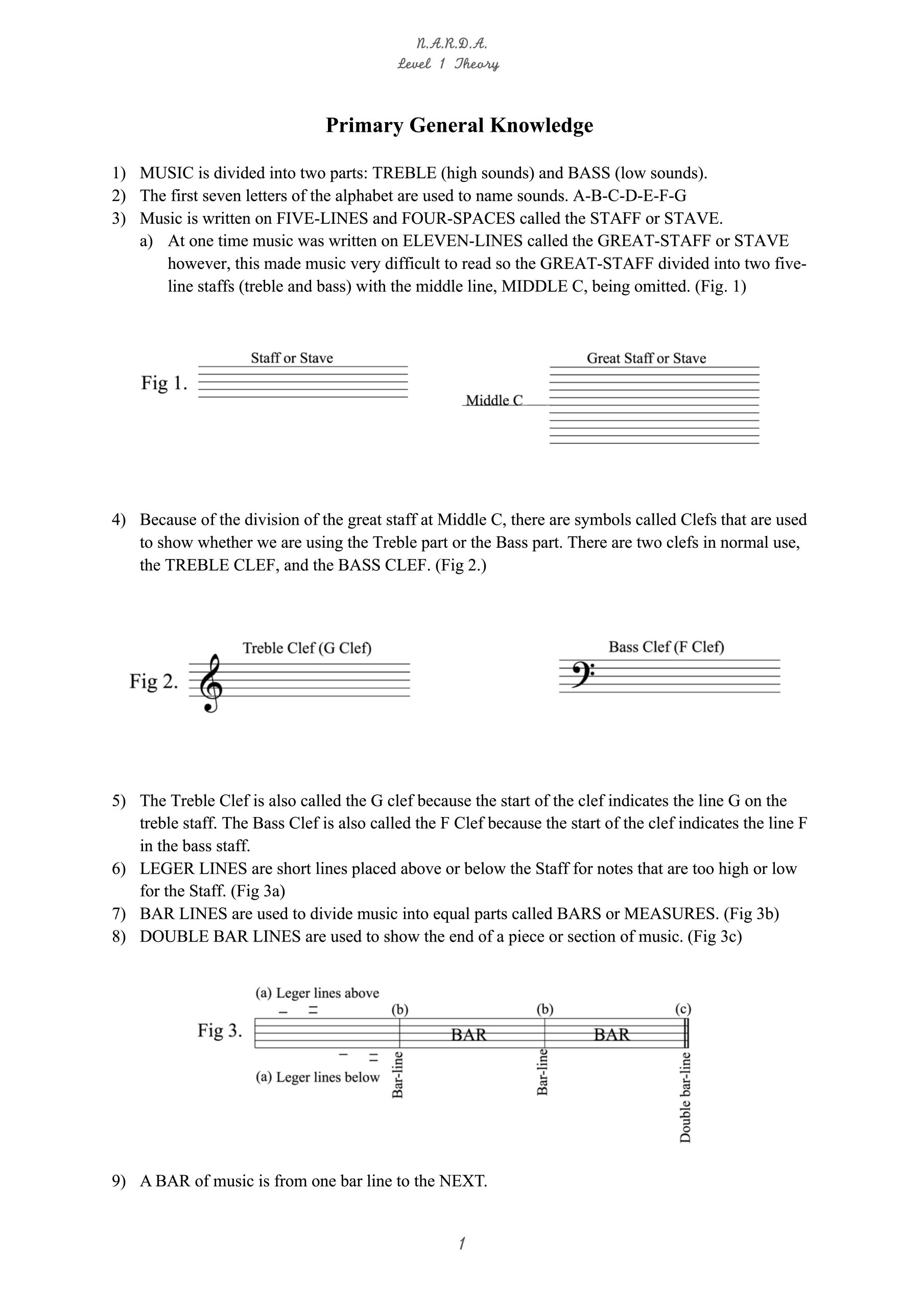


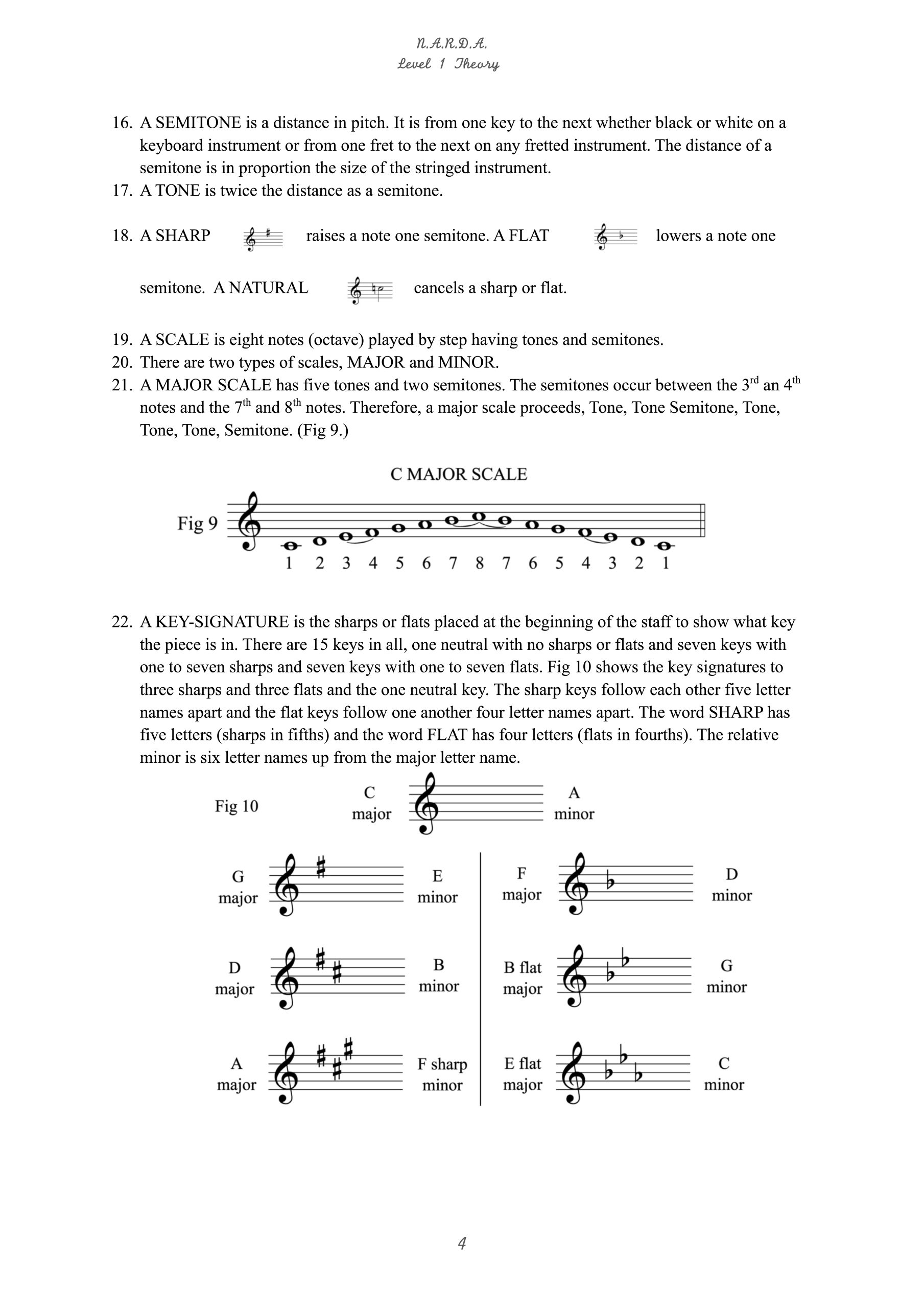

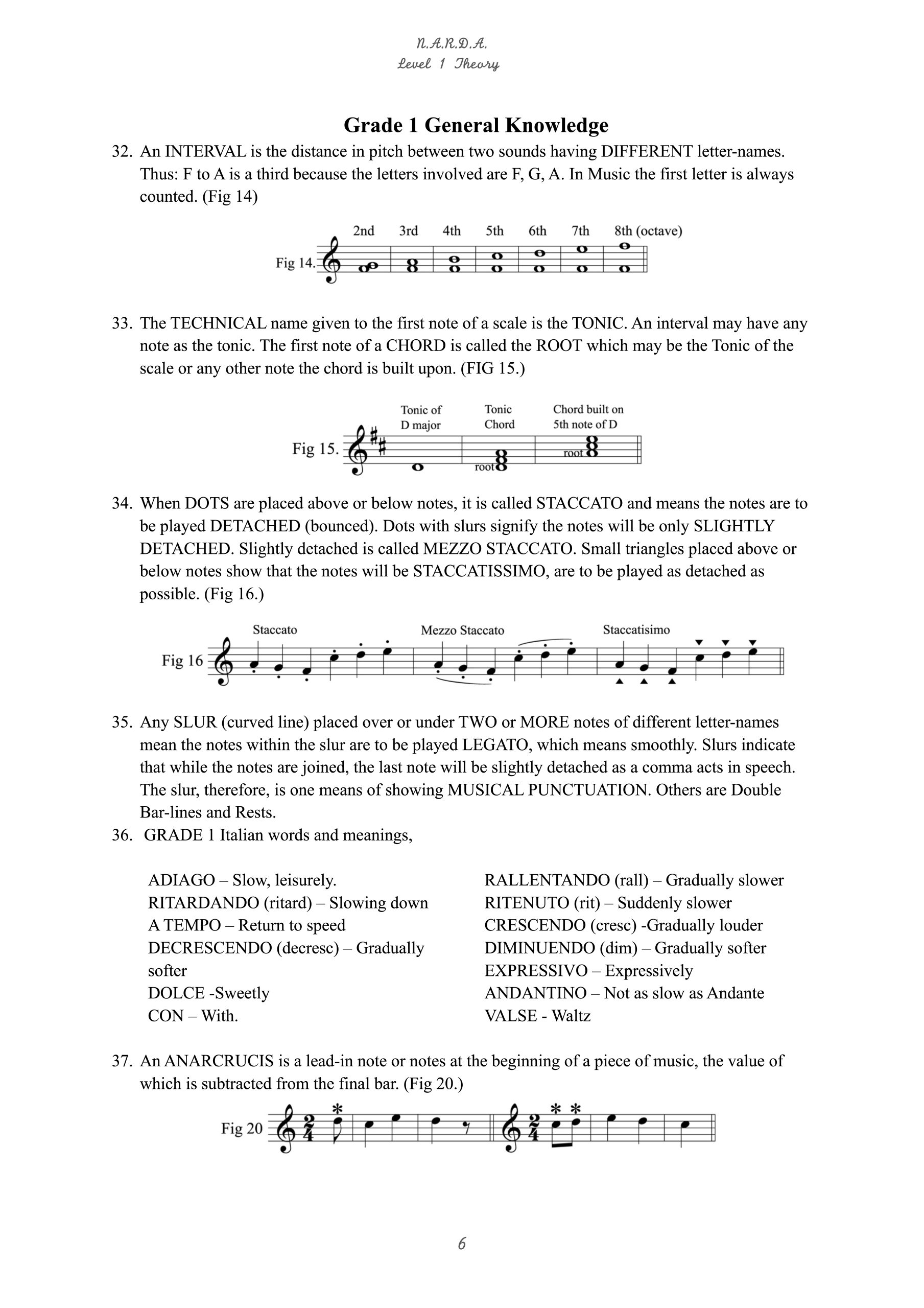
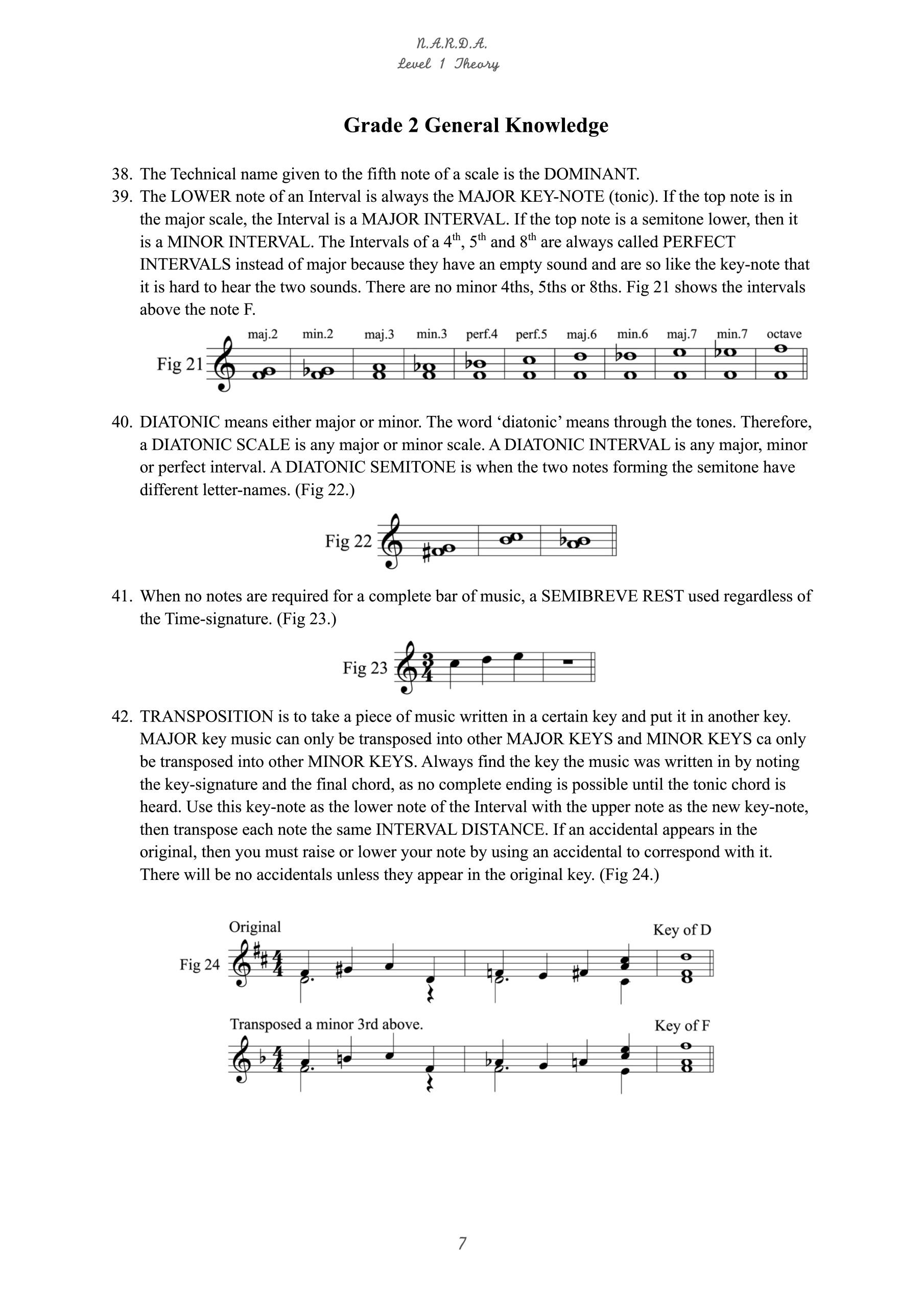
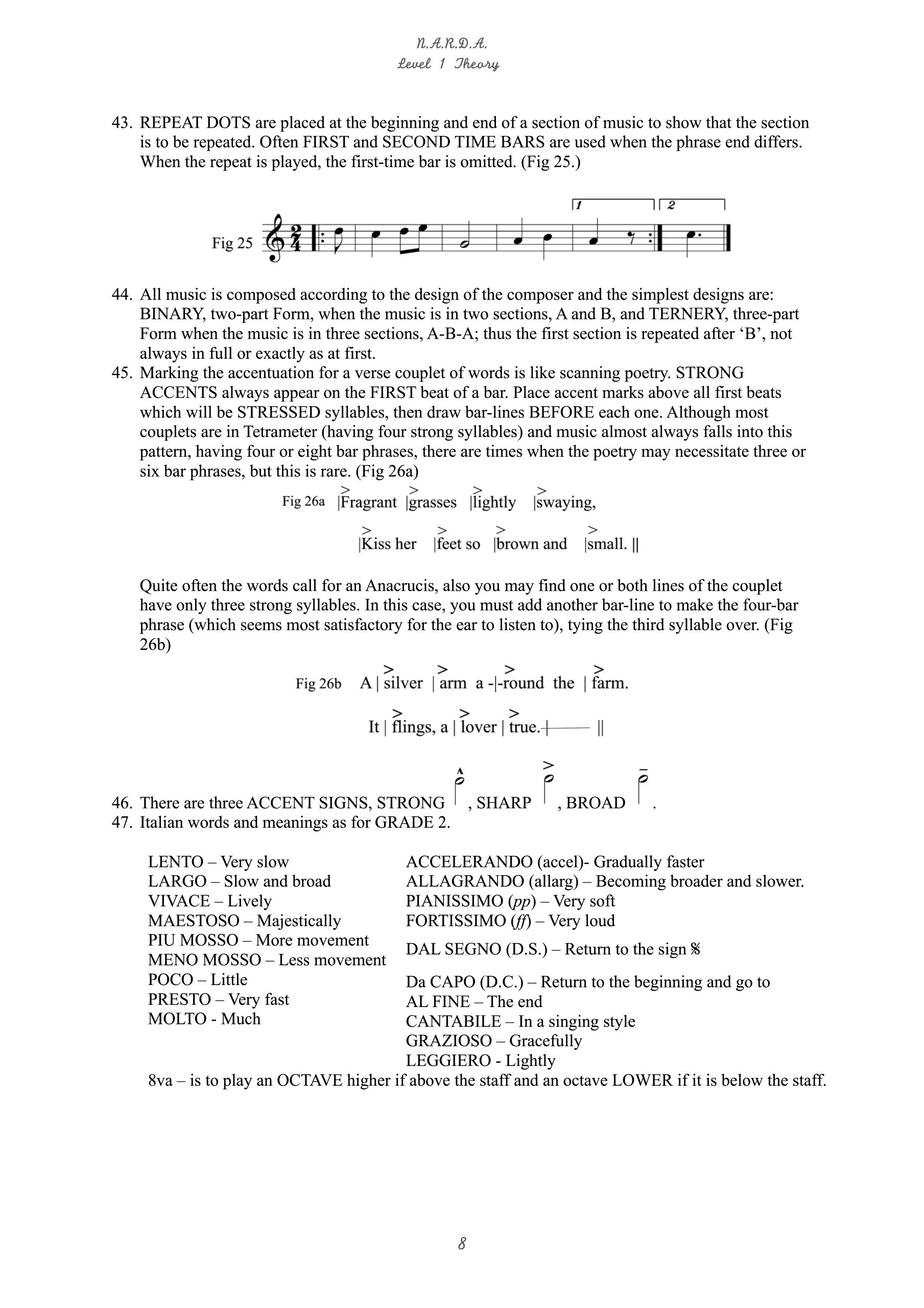

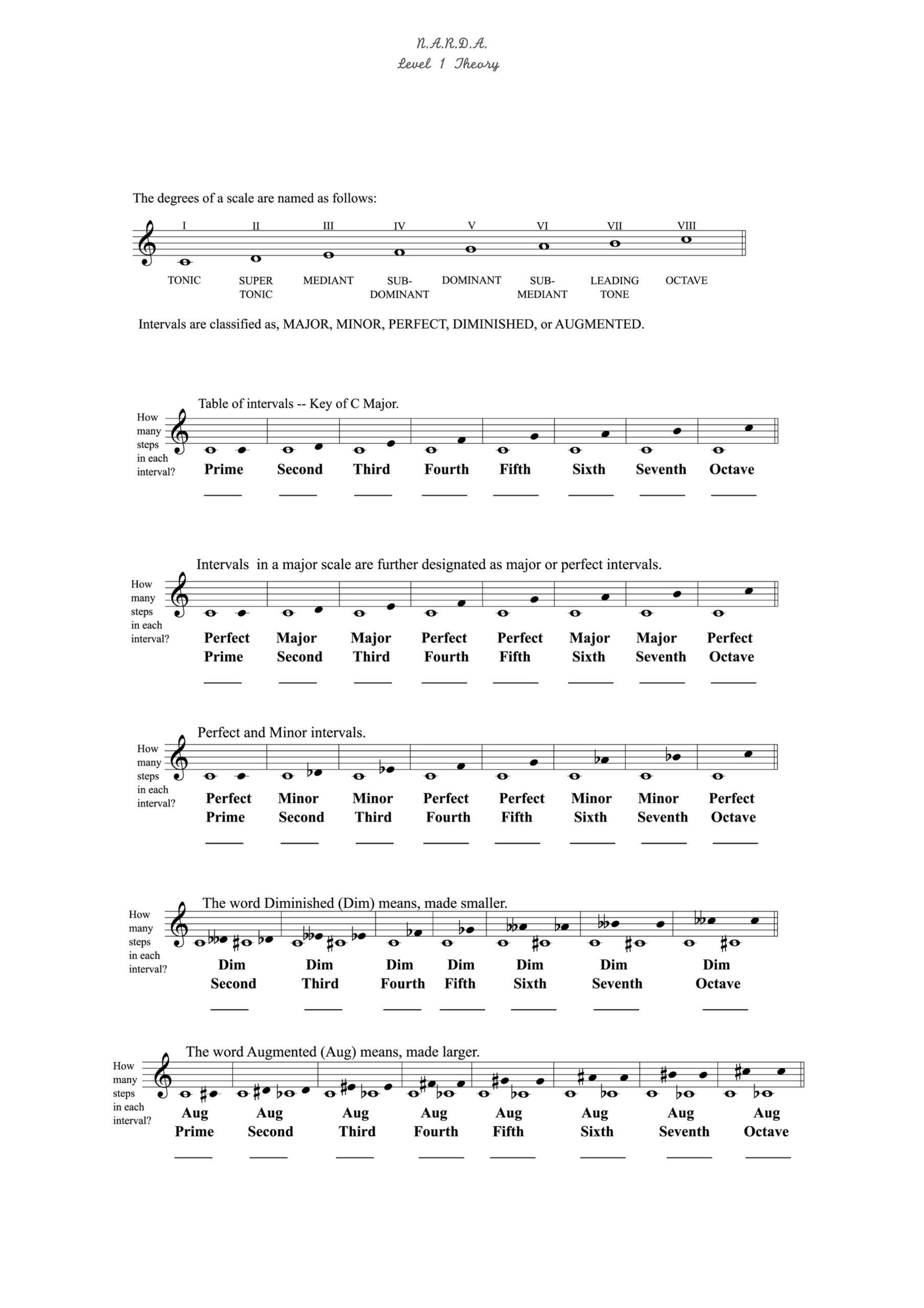
02
Level 2
03
Level 3
Lorem ipsum dolor sit amet, consectetur adipiscing elit. Ut elit tellus, luctus nec ullamcorper mattis, pulvinar dapibus leo.
